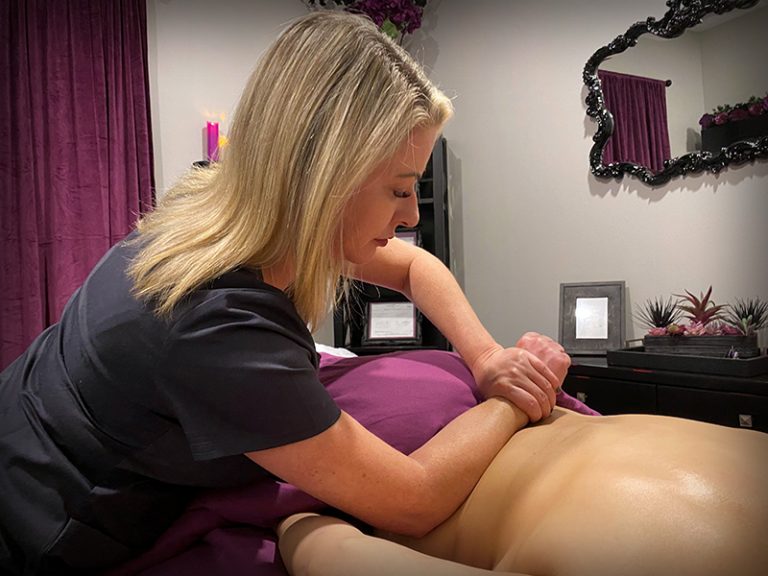By Appointment Only
No products in the cart.
Deep Tissue Massage uses slow, deep, and long strokes with a combination of trigger point therapy to target the deeper layer of muscles. The focus is on releasing patterns of muscle tension, breaking up scar tissue, improving circulation and detoxification. Modalities are done with knuckles, forearms, elbows, and fists to get to the deepest muscles. Due to pressure can cause some soreness for 1 to 2 days after treatment.

On WebMD they describe this style as so:
“Deep tissue massage is best for giving attention to certain painful, stiff “trouble spots” in your body. The massage therapist uses slow, deliberate strokes that focus pressure on layers of muscles, tendons, or other tissues deep under your skin. Though less rhythmic than other types of massage, deep tissue may be therapeutic — relieving chronic patterns of tension and helping with muscle injuries, such as back sprain.”
For more information on Massage Therapy, Style and Benefits visit WebMD or click here for more information.
If you are looking for a style of massage that uses a little less pressure than Deep Tissue we recommend Therapeutic Massage (medium pressure) or Swedish Massage (light pressure) as alternatives.
You do not need any special preparation for massage. Before a massage therapy session starts, your licensed massage therapist should ask you about any symptoms, your medical history, and what you are hoping to get out of the massage. You and your therapist will go over what type of massage they feel is more beneficial for you due to the concerns that you are having. In a typical massage therapy session, you should undress only to the point that you are comfortable with. Your therapist will go over the proper draping techniques, step out of the room for you to get ready, and then knock before they enter.
Do not worry if this is your first massage the therapist will keep you covered. If a massage therapist is applying to much pressure, ask for them to go lighter. Occasionally, you may have a sensitive spot in a muscle that feels like a knot. It is likely to be uncomfortable while your massage therapist works it out. But if it becomes painful, speak up. It is important to voice your own comfort and level of pressure for a successful massage treatment. Afterwards, it is especially important to stay hydrated and drink plenty of water. The next day you may feel some slight soreness if the therapist worked on a knot or sensitive muscle or you received a deep tissue massage.